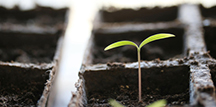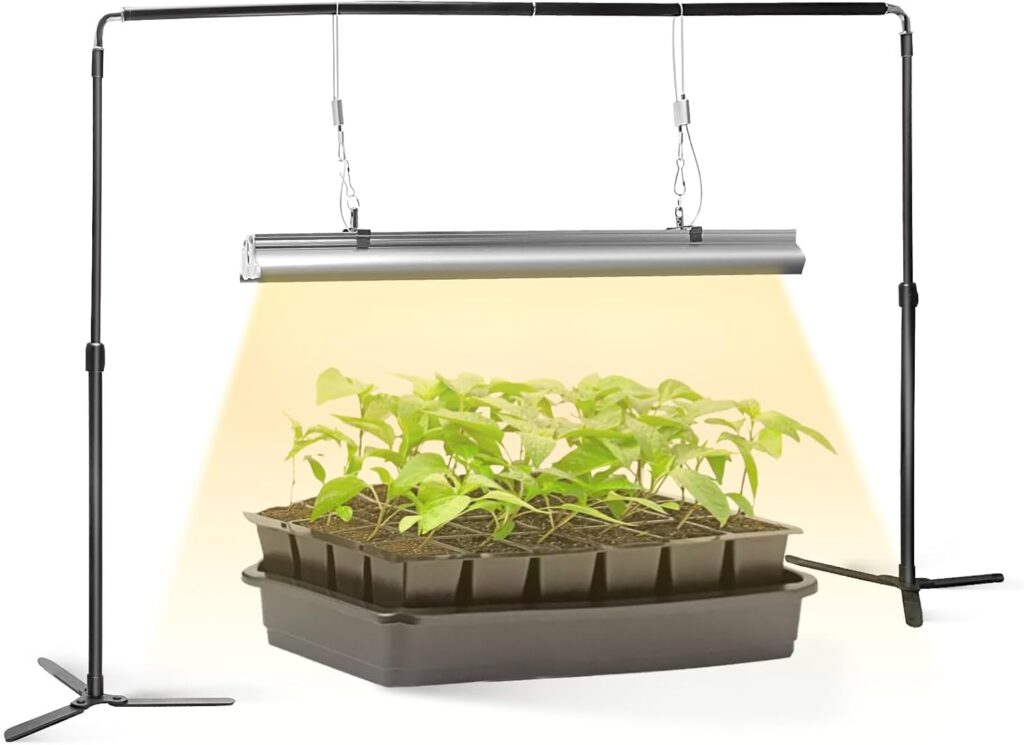Too many people try to start plants from seed and end up discouraged. But if you read up a little on the plant and make sure you provide what it needs, you will have success with seeds.

Seek out those plants that are very easy to start from seed. One clue is to look on the seed packet and see how many days the seed takes to germinate, that is, sprout. If it germinates in a week or less, it’s very easy. If it takes a week or two to germinate, it’s somewhat easy. Those seeds that need more than two weeks to germinate or have special requirements, such as freezing, are difficult to start from seed.
• Don’t Start Them Too Early
Most annual vegetables and flowers should be started 6-8 weeks before the last frost date. (Check the seed packet.) In the north half of Iowa, that’s May 15. In the southern half of Iowa, that’s May 10. So that means starting those seeds in late March or early April. Otherwise, they’ll be indoors too long and get leggy and weak from lack of good, strong, natural sunlight.
• Follow Seed Packet Directions Exactly
For best success, follow the recommended planting time and temperature suggestions on the label to the letter. It’s especially important not to start too early in the season or else seedlings will get leggy.
• Use Seed-starting Mix
Avoid regular potting mix and never use soil dug up from the garden. Choose only a soil or soilless potting mix made specifically for seed. Otherwise, seeds might rot or become prone to diseases.
• Provide Light or Dark as Needed
Some seeds should not be covered with soil—they need light to germinate. Others need to be covered with soil because they germinate best in the dark. Again, check the seed packet to find out. Then sprinkle soil lightly over the seeds, if necessary, to the depth specified on the packet.
• Water Seeds Carefully
Fine seeds are easy to wash out. Use a spray bottle or dribble water from your hand. Or set the container in a tray filled with water halfway up the sides of the container so water can seep up from the bottom. Remove after a half hour or until the soil surface becomes moist.
• Slip Into a Plastic Bag
Put the container into a clear plastic bag. It retains moisture and keeps seeds out of temperature-altering drafts. (But remove it as soon as the seeds start to germinate so they don’t get fungal problems).
• Provide the Right Temperature
A big mistake most home gardeners make is not providing enough warmth for the seeds once they’re planted. Seeds packets that specify that seeds need “warm” conditions usually mean 70 to 80 degrees while “cool” means 55 to 65 degrees. Set a room thermometer next to the seeds to make sure they’re at the right temperature and move them around the house until you find the right temperature. To provide enough warmth, you can also purchase warming mats on which you set containers on top of for gentle bottom heat.
• Provide Ample Light
There are a number of inexpensive grow lights available now online. Be sure to choose those specified for plants–they have a special color spectrum that is different than, say, the light in bulbs you’d use on your ceiling or in a lamp.

Click here for a list of plants that are easy to start from seeds.
The grow light shown in the image is available from Amazon. Click here.
Please do not use content from this site without express permission from The Iowa Gardener. Click here to request permission to use.